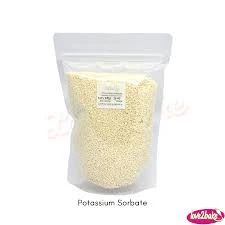
additives and preservatives
Additives and Preservatives Understanding their Role in Modern Food
In recent years, the conversation surrounding food additives and preservatives has taken on significant importance, as consumers become increasingly aware of what they eat. These substances, often viewed with skepticism, play vital roles in the food industry, affecting safety, shelf-life, and quality of products. In this article, we will explore the nature of additives and preservatives, their classifications, their benefits, and some concerns associated with their use.
Understanding Food Additives and Preservatives
Food additives are substances added to food to perform specific functions, which include enhancing flavor, texture, appearance, and nutritional value. They can be classified into several categories flavor enhancers, color additives, emulsifiers, stabilizers, thickeners, and sweeteners. Preservatives, on the other hand, are a subset of food additives specifically designed to prevent spoilage, extend shelf-life, and inhibit microbial growth.
Preservatives can be natural or synthetic. Natural preservatives include salt, sugar, vinegar, and certain herbs and spices, while synthetic preservatives include sodium benzoate, sodium nitrite, and sulfites. While the primary purpose of preservatives is to prevent spoilage and foodborne illnesses, they also allow for more extended distribution and storage times, which is essential in today’s global food market.
Benefits of Additives and Preservatives
The advantages of food additives and preservatives are manifold. Firstly, they enhance food safety. By preventing the growth of pathogens and spoilage organisms, preservatives ensure that food remains safe for consumption over extended periods. This is particularly important in a world where food supply chains are globalized and products may take longer to reach consumers.
Secondly, additives improve the texture and flavor of food products. For instance, emulsifiers are responsible for creating smooth and stable mixtures, while flavor enhancers can intensify and enrich the taste of otherwise bland foods. Additionally, color additives can make food visually appealing, influencing consumer preferences and perceptions.
additives and preservatives

Another significant benefit is the nutritional enhancement of food products. Certain additives, like vitamins and minerals, are used to fortify foods, helping to combat nutritional deficiencies in the population. This is especially relevant in processed foods, where the nutritional quality may be lower than in fresh products.
Concerns About Additives and Preservatives
Despite their benefits, there are growing concerns about the consumption of additives and preservatives. Some individuals may experience adverse reactions to certain substances, such as food allergies or sensitivities. For example, sulfites, often used in dried fruits and wines, can trigger asthmatic reactions in sensitive individuals.
Moreover, the long-term health effects of consuming synthetic additives are still a matter of ongoing research. Some studies suggest a potential link between certain artificial preservatives and hyperactivity in children, while others raise concerns about the risk of chronic illnesses. As a result, the demand for natural and organic food products has surged, with many consumers seeking to avoid synthetic additives altogether.
Additionally, there is the issue of mislabeling and consumer misinformation. Some products may contain additives that consumers are unaware of, leading to distrust in food labeling. Transparency in food production is increasingly becoming an essential factor for consumers, with many advocating for clearer regulations and labeling practices.
The Future of Food Additives and Preservatives
As we look to the future, the food industry is likely to see a shift towards the use of natural alternatives to synthetic additives and preservatives. Advances in food science may lead to the development of new, safer methods to enhance food preservation without compromising health. Additionally, increased consumer advocacy and awareness will likely push manufacturers to prioritize transparency and quality in their ingredient lists.
In conclusion, food additives and preservatives are integral to the modern food supply, ensuring safety, enhancing quality, and extending shelf life. While concerns around their use exist, continued research and consumer education can help inform better choices. As we move forward, the focus will likely shift toward balancing food safety and health with the rising demand for cleaner, more natural food products. Understanding the role of these substances is essential for making informed decisions about the foods we consume.
-
Pure Sodium Dichloroisocyanurate Dihydrate | Powerful DisinfectantNewsAug.29,2025
-
Industrial Chemicals: Quality & Purity for Every IndustryNewsAug.28,2025
-
Nitrile Rubber Honoring Strict Production StandardsNewsAug.22,2025
-
Aspartame Ingredients Honoring Food Safety ValuesNewsAug.22,2025
-
Fertilizer for Balanced Plant NutritionNewsAug.22,2025
-
Cyanide Gold Processing with High Purity AdditivesNewsAug.22,2025
-
Formic Acid in Textile Dyeing ApplicationsNewsAug.22,2025
Hebei Tenger Chemical Technology Co., Ltd. focuses on the chemical industry and is committed to the export service of chemical raw materials.
-

view more DiethanolisopropanolamineIn the ever-growing field of chemical solutions, diethanolisopropanolamine (DEIPA) stands out as a versatile and important compound. Due to its unique chemical structure and properties, DEIPA is of interest to various industries including construction, personal care, and agriculture. -

view more TriisopropanolamineTriisopropanolamine (TIPA) alkanol amine substance, is a kind of alcohol amine compound with amino and alcohol hydroxyl, and because of its molecules contains both amino and hydroxyl. -

view more Tetramethyl Thiuram DisulfideTetramethyl thiuram disulfide, also known as TMTD, is a white to light-yellow powder with a distinct sulfur-like odor. It is soluble in organic solvents such as benzene, acetone, and ethyl acetate, making it highly versatile for use in different formulations. TMTD is known for its excellent vulcanization acceleration properties, which makes it a key ingredient in the production of rubber products. Additionally, it acts as an effective fungicide and bactericide, making it valuable in agricultural applications. Its high purity and stability ensure consistent performance, making it a preferred choice for manufacturers across various industries.





